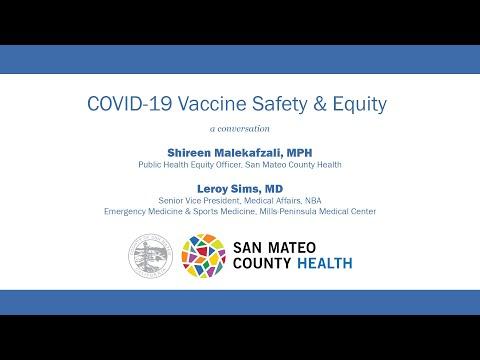Statement on Vaccine Equity
SMC Health Statement on Vaccine Equity
A Key Priority for Local Vaccine Distribution
San Mateo County and the state of California have made equitable distribution a key priority of local vaccine distribution. In this first phase of targeting health care workers and residents of congregate facilities, we are reaching the diverse residents and workers who are shouldering the highest risk of exposure. We will fully follow the state’s prioritization in the early phases. In this prioritization, it’s important to acknowledge that health care workers, defined by the CDC’s Advisory Committee on Immunization Practices (ACIP), as paid and unpaid persons serving in health care settings include janitorial staff, those transporting patients, and other staff who may be missed without careful consideration for an equitable approach. It’s also important to communicate and reach out to all levels of health care workers to ensure understanding of vaccine safety in culturally sensitive and linguistically appropriate ways.
The state’s organization of vaccine distribution through local health departments enables San Mateo County to assure distribution to the entities best positioned to reach the target residents. San Mateo County’s plan submitted to the state outlines target metrics that will allow us and the public to track the reach and be accountable to our equity goals.
The vaccine distribution plan is available here.
As we learn the timeline and federal and state guidance on the approach for distribution to the general public, we expect to tailor the outreach and the distribution strategy to assure reaching the most vulnerable communities, acknowledging the troubling history of health care research in communities of color. For community-wide vaccine distribution, we have developed a seven-point framework to guide our overall approach:
- Provide transparency in the science, data, and vaccination process.
- Prioritize those that shoulder the most risk.
- Acknowledge explicitly the negative and painful history of health care in the US in communities of color and current health inequities that has led to distrust in healthcare, research, and government.
- Engage community and stakeholders to better understand their concerns and needs, and respond to concerns and needs as much as possible. (combined two previous points)
- Communicate effectively in culturally sensitive ways through trusted partners.
- Overcome as many barriers to accessing the vaccine as possible – geographic, linguistic, cultural, physical, technological, documentation, mistrust, and more.
- Learn and improve as we go.
Being open with the public about the process and science is the first step to building a foundation of trust. We recognize that we will need to communicate effectively through trusted messengers to reach residents who may not know or trust what they are hearing about the vaccine and its safety. We understand the deep and painful history of health care and health research on communities of color that has led to mistrust and concerns related to new vaccines.
Our communities of color, low-income communities, older adults, and other impacted populations face many barriers to vaccine acceptance and access. We are currently involved in a community engagement effort to learn from leaders closest to our most impacted communities. The over 100-person Vaccine Communication Equity Working Group was launched on January 14th and meets weekly to share feedback on the needs and concerns of San Mateo County residents. Their expertise is being woven into a tailored outreach and distribution strategies that assure reaching the most vulnerable communities while acknowledging the troubling history of health care in communities of color. We understand that the history of mistreatment of communities of color and current health inequities within the US medical system has led to distrust and concerns related to new vaccines. For more background on this history and the need for strategies to repair historical harms, click here. We look forward to hearing from community leaders about their needs and concerns so we can respond, plan accordingly, and adjust as we learn.
Presentation on Vaccine Equity
At the meeting of San Mateo County’s Vaccine Communications Equity working group, Chief of San Mateo County Health Louise Rogers discusses striving towards equitable distribution of the Covid-19 vaccine for residents and the steps County Health and it partners are taking to achieve this goal. Watch the video presentation.

